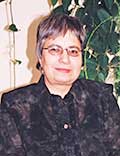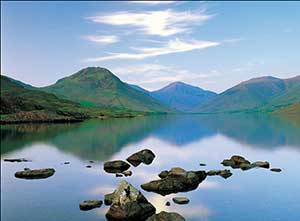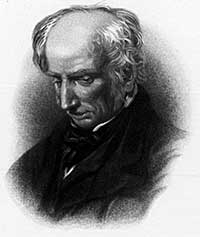|
The Lake District
 Надежда Никифоровна Рогожина
Надежда Никифоровна Рогожина, проректор по международным программам, зав. кафедрой лингвистики и межъязыковой коммуникации Самарского муниципального университета Наяновой, кандидат педагогических наук, доцент.
Директор негосударственного учреждения дополнительного образования “World Class-Samara”.
Dear Reader,
Now that I am in England, I would like to share my impressions of a visit (thanks to my friend David Wright) of a place I have dreamed of visiting for ages. I would also like to give credit to the organisation which is responsible for preservation of this area, and many others, in a proper state.
The place is the Lake District in Cumbria, which is a county in the north-west of England, and the organisation is the National Trust, which is a charity which conserves places of historic interest.
We were fortunate with the weather though David warned me that rains were rather frequent there. In fact, there is a joke that if there is no rain at the moment, it has either just stopped or is just about to start!
Anyway the sun was shining, the sheep and cows were grazing on the slopes of the hills and the whole picture looked idyllic! I must admit that I was impressed by the sight of the fields which were surrounded by stone walls built in a special manner. The whole place is absolutely lovely with large masses of wild woodlands, mixed forests as a specialist would put it. I have never seen such ancient trees in all my life! One can imagine that those trees had seen many interesting events in British history: the Roman invasion, wars, the start of the industrial revolution, etc. And the lakes (about 15 of them) are like pearls in a necklace! A picturesque view! The largest is Lake Windermere and one can enjoy the delights of a cruise to Lakeside combined with a trip on a steam railway (a special pride of the National Trust) which will take you through rugged countryside along sections of the River Leven.
The whole place is well preserved and we met a lot of people, who like ourselves, came to see the famous place. There were many walkers and special footpaths for them, the combination of woods and mountains made the place especially attractive.
It was kind of a sentimental journey for David who used to live in the Lake District twelve years ago and it was nice to see the places he knew very well.
David is a wonderful narrator and, thanks to him, the trip was a special one. It is always very interesting to visit places with those who know them well – so I was lucky!
So, if you ever come to Great Britain, do not miss your chance to visit the Lake District: fascinating buildings, glorious gardens, fabulous walks and amazing history, as the tourist guide puts it!
If you want to know more about the projects of the National Trust, visit their web site: www.nationaltrust.org.uk
Nadezhda

Mr. David Wright
I worked for Glaxo1, I lived for about twelve years in a part of the north-west of England called ‘The Lake District’. The countryside there enjoys a well-deserved reputation for its scenic beauty. As the name suggests, there are many lakes of various sizes and shapes, intermingled with hills, hidden villages, green pastures and a few sizeable towns. During the summer months, tourists visit the lakeside towns in their thousands, frequently not venturing more than a couple of hundred metres from their cars or the coaches that took them there. There are other visitors, however, who like to explore the area and see the wonderful scenery more closely and, for them the most practical means of accomplishing their objective is by walking or, less often, by cycling. Certain lakes and hills are very popular destinations and a warm sunny day (a rarity in those parts) will see long processions of anorak-clad figures, rucksacks on their backs, trudging along the well-worn paths. Some are pilgrims seeking shrines at the former homes of Beatrix Potter2, John Ruskin3 or William Wordsworth and his fellow lakeland poets. Those who are more familiar with the district, however, will usually seek quieter, less-populated routes so that they may enjoy the peace and solitude which are amongst the greatest attractions of the place – for me, at any rate.
 I had not returned to the Lakes since I left over ten years ago, so when Dr Rogozhina, who was visiting England at the time, mentioned that she would like to see the place, I welcomed the opportunity to revisit some familiar old haunts and to share my enjoyment of them. For the first part of our odyssey, we sped along the rather boring, but very convenient M6 motorway4. It was not long, however, before glimpses of distant hills heralded our approach to our destination. We left the motorway to continue its course to the Scottish border whilst we turned off towards the crowded town of Windermere on the northern shore of the eponymous lake and down the western side of the water onto the road5 which leads to the famous ship-building town of Barrow-in-Furness.
I had not returned to the Lakes since I left over ten years ago, so when Dr Rogozhina, who was visiting England at the time, mentioned that she would like to see the place, I welcomed the opportunity to revisit some familiar old haunts and to share my enjoyment of them. For the first part of our odyssey, we sped along the rather boring, but very convenient M6 motorway4. It was not long, however, before glimpses of distant hills heralded our approach to our destination. We left the motorway to continue its course to the Scottish border whilst we turned off towards the crowded town of Windermere on the northern shore of the eponymous lake and down the western side of the water onto the road5 which leads to the famous ship-building town of Barrow-in-Furness.
Before coming to its ignominious end, this road passes through one of our objectives, Ulverston, where I used to live, so we had a quick nostalgic look at my former house and the factory where I once worked. A notable feature of the town is a replica lighthouse built on top of a hill, clearly visible when approaching from the east, to commemorate Sir John Barrow who was a prominent British geographer and statesman who promoted many early voyages of discovery around the world6.

I WANDERED lonely as a cloud
That floats on high o’er vales and hills,
When all at once I saw a crowd,
A host, of golden daffodils;
Beside the lake, beneath the trees,
Fluttering and dancing in the breeze.
Continuous as the stars that shine
And twinkle on the milky way,
They stretched in never-ending line
Along the margin of a bay:
Ten thousand saw I at a glance,
Tossing their heads in sprightly dance.
The waves beside them danced; but they
Out-did the sparkling waves in glee:
A poet could not but be gay,
In such a jocund company:
I gazed – and gazed – but little thought
What wealth the show to me had brought:
For oft, when on my couch I lie
In vacant or in pensive mood,
They flash upon that inward eye
Which is the bliss of solitude;
And then my heart with pleasure fills,
And dances with the daffodils.
William Wordsworth, 1804.
We did not linger there though, for we had much to see! We followed a narrow winding lane up the nearby hillside and left the verdant, sylvan lowlands for a more austere landscape of purple heather-clad hills with views of the distant sea. No sooner did we reach the summit than we were plunging down into the next valley, for the Lake District manages to cram a great number and variety of features into a comparatively small overall area. There then followed in quick succession the sandy beaches along the shores of the River Duddon estuary7, twisting minor road beside burbling streams8 under leafy arches of tree branches meeting overhead, flocks of incurious sheep and tantalising glimpses of still water to the busy town of Coniston beside Coniston Water9. This we left to the tourists thronging its narrow streets whilst we headed for Ambleside, via Hawkshead and Esthwaite Water, and thence to Elterwater and the impressive grandeur of the Langdales. No visitor should miss the quiet, hidden tranquility of Tarn Hows (we didn’t!) and, by this time, it was already late in the afternoon so we were ready for some refreshment. We found a little country pub where we enjoyed a welcome pot of tea (with milk and sugar!) and biscuits before wending our way home. Although this meant retracing our steps to some extent, the scenery was just as entrancing when viewed from the opposite direction. There was not time to include gloomy Thirlmere and Haweswater reservoirs which provide much of the water supply to Manchester; Keswick, the principal centre for walking enthusiasts (and home of the pencil10) beside jewel-like Derwent Water so beloved by painters. Buttermere, Ullswater, Ennerdale, Basenthwaite and Wast Water were similarly omitted from our itinerary, but each is well-worth an extended visit if time permits.
For the same reason, we saw nothing of the remains of the now all but vanished coal, iron, lead, silver and copper mining industries, which, together with iron smelting, steel making, ship-building and repairs, steam engine building, railway line rolling mills, etc, were major factors in the development of the area since before Roman times.
Throughout the day, the weather11 had been kind to us and showed us a typical sample of its Lake District variety: sunshine and showers. As the season was late summer, the trees were still clad in green; later in the year, the whole scene is transformed by the reds, yellows and browns of autumn; later still, a cloak of snow may add to the charms of the place while the absence of foliage enhances the views.
It was a long day, but I think we were both well-satisfied with this taste of what the Lake District has to offer. If you ever have an opportunity to pay it a visit, I urge you not to pass up the chance and to discover for yourself this treasure.
1 A pharmaceutical manufacturing company now known as GlaxoSmithkline.
2 Who wrote the children’s stories about Peter Rabbit and other animals.
3 A great Victorian thinker, artist, scientist, poet, environmentalist, philosopher and the pre-eminent art critic of his time. He greatly influenced and encouraged the Pre-Raphaelite painters Rossetti, Millais, Holman Hunt, etc.
4 A section of this motorway called the ‘Preston By-pass’ was the first such road in Britain and thus was a pioneer of the network of fast routes all over our little island.
5 This road is known locally as the longest cul-de-sac in Britain because it meanders across southern Lakeland to Barrow and then more or less peters out.
6 After trips to China and South Africa early in his career, he preferred to direct matters from the comfort of his office in London rather than venture himself into the desserts of Africa of the snowy wastes of northern Canada.
7 With miles of empty, sandy shore rivalling anything the tourist centres of Blackpool and its like have to offer.
8 Known locally as ‘burns’ or ‘becks’.
9 It was here that Donald Campbell was been killed in 1967, a split second before breaking his own water speed record in his jet-powered boat, the Bluebird K7. He was travelling at more than 300mph (483 km/h) on Coniston Water when the boat was catapulted 50ft (15m) into the air after its nose lifted. Forty-six-year-old Mr Campbell was killed instantly as the boat hit the water and immediately disintegrated. His body was not discovered and recovered until 2001. Many of the lakes are more properly known as ‘Waters’.
10 It was near here that graphite was discovered and mined, leading to the establishment of the world-famous Cumberland Pencil Company well-known to generations of children as they took their first steps in learning to write and draw – now almost defunct as its products have been largely superseded by the ball-point and felt-tipped pens and other Far Eastern alternatives.
11 No Englishman’s account is complete without some reference to the weather!
Читать еще в этой рубрике:
Читать еще в этом номере:
|
|











